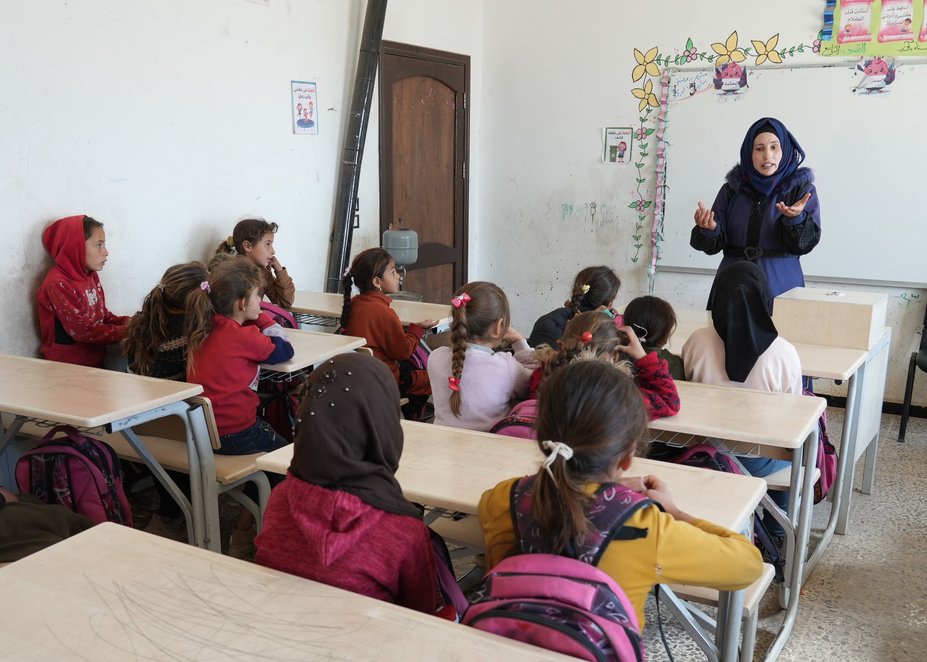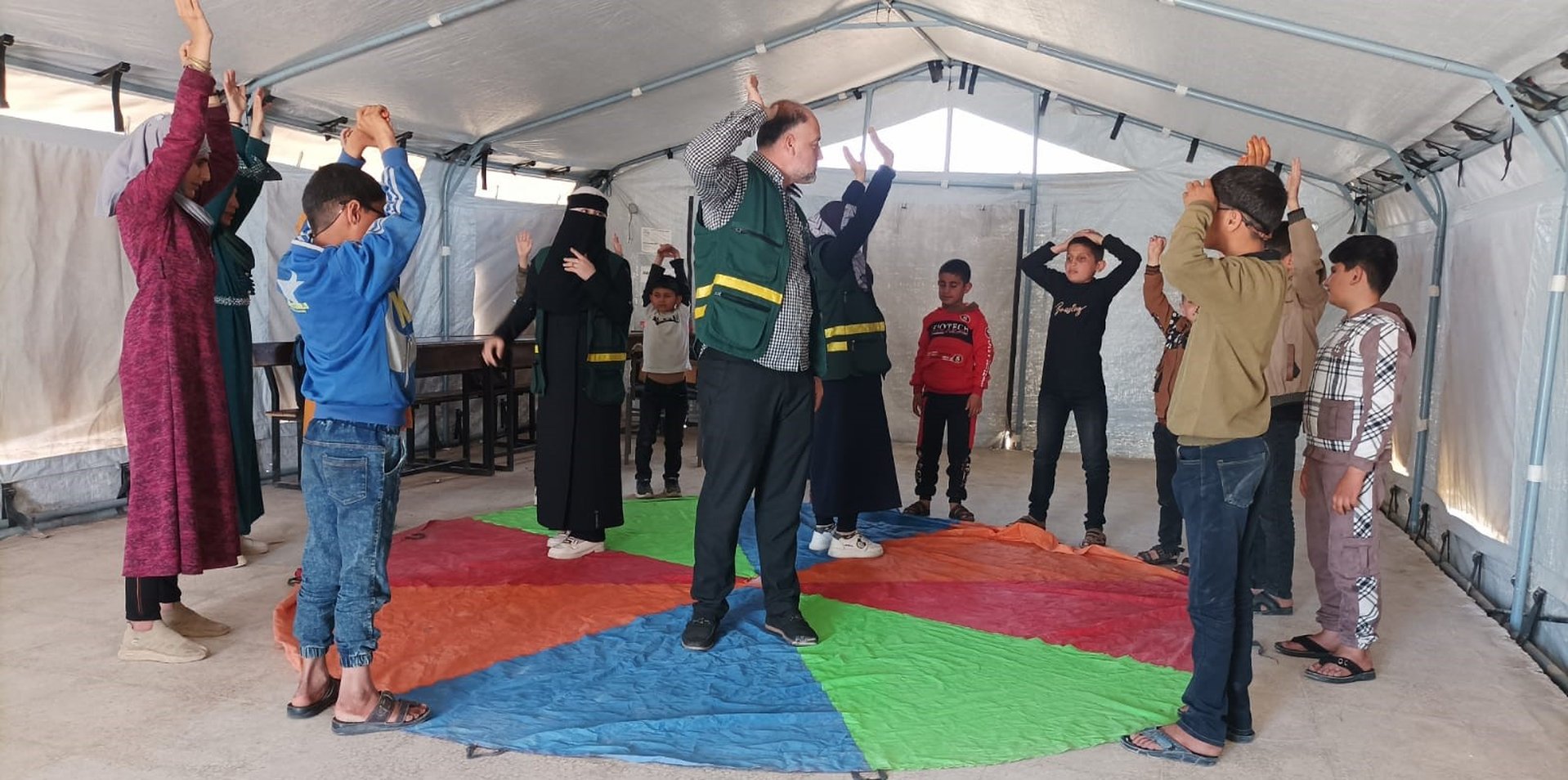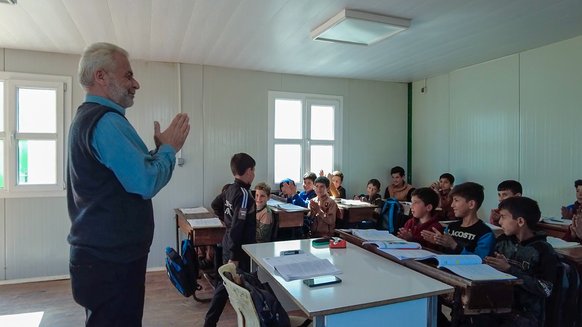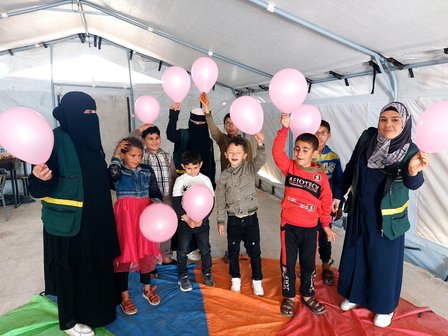Building a Brighter Future in Syria: Our Commitment to Children and Families in the Northwest
July 8, 2025

The 14-year conflict in Syria has had a significant impact on the whole of Syria, but conditions in the war-affected Northwest have continued to worsen from ongoing hostilities, a declining economic crisis, and the impacts of earthquakes in February 2023. With a population of 5.1 million Syrians in the Northwest, 4.2 million remain in need of assistance against displacements, severe inflation and loss of livelihoods, and food shortages.
Since the fundamental shift in December 2024, over 279,000 Syrians have returned to Syria from neighbouring countries with the number of newly displaced people reaching 617,000, of whom 40% are located in Idlib and 17% in Aleppo, both Northwestern governorates. In a place where uncertainty clouds everyday life, one project stood out for delivering something more powerful than supplies or services: hope.
The “Building a Brighter Future” initiative, funded by the European Union Humanitarian Aid, in partnership with Takaful Al Sham (TAS), has provided education, child protection and psychosocial support services to thousands of displaced children and their families—restoring learning, emotional safety, and resilience in communities shattered by conflict and natural disasters.
Education Beyond Survival
In towns like Sarmada, Deir Hassan and Burdaqly—where school closures, trauma and economic hardships have disrupted learning for years—the programme helped children get back on track, exceeding enrolment targets by 12% with over 3,700 students, including 90 children with disabilities, joining nonformal education.
The targeted children were supported to catch-up with their peers and enter formal education, and in cooperation with the Directorate of Education, 20% of those children transitioned to formal education. A displaced mother affirmed this saying:

Blind children attend a TeamUp psychosocial session as part of the project
Healing Through Psychosocial Support
Beyond books and pencils, the project offered something just as essential: emotional support, through the BeThere and TeamUp programmes. Children and caregivers engaged in safe spaces that helped them process trauma, build resilience and strengthen bonds.
Positive shifts in wellbeing at the individual, family and community levels were noted through improved parenting practices, reduced violence and increased school attendance. Recreational activities like arts, acting and sports were introduced, making sessions more fun and inclusive. As one participant described:
Protecting the Most Vulnerable
The project didn’t just teach and heal—it protected. With its inclusive approach, Unaccompanied and Separated Children (UASC) received case management services and were referred to the appropriate experts and institutions. Upon assessment, families received cash and in-kind support to ease their financial burdens and help stabilise their households. One father said:
Adaptability and Sustainability
Planting seeds for long-term change, the project dedicated room for activity adjustment based on participants’ feedback and preference, with 88% of children with disabilities reporting that activities were adapted for them. Local teachers and facilitators were trained. Parent-Teacher Committees were formed and contributed to repairing school buildings.
Environmental education even made its way into the schools we targeted—a suggestion from our participants. Children planted trees, sorted waste and learned habits to care for their surroundings. One caregiver shared:
What We Learned
This project showed what’s possible when services are integrated, adaptive, and community-driven. It also reminded us of the ongoing challenges:
- The strain on caregivers juggling session schedules and household duties requires flexibility in session timing and frequency.
- The gap in specialised support for children with complex disabilities prevents them from participating in or accessing services.
- The destroyed infrastructure limits us to the few functioning school buildings, which are far from the communities we work with or require extensive rehabilitation.
Addressing the Challenges: What We Have Been Doing
- Adapting our project designs with the needs of children in mind, rehabilitating schools and ensuring additional support for children to participate in all activities regardless of the complexities they are facing.
- Adapting by providing our guided self-learning programme, where teachers visit students at their locations to provide additional guidance, enabling students to continue their education.
The message is clear:
With the right support, children in crisis can learn, heal, grow—and dream again.
In a region too often defined by loss, the “Building a Brighter Future” demonstrated how humanitarian work can go beyond relief—toward resilience, dignity, and a brighter path forward.
Background
War Child has been present in the Syria since 2012 to respond to the needs of crisis-affected communities, and this 12-month-long multisectoral initiative was evaluated and assessed with 117 project participants, including children and adults from local communities and interviews with staff and caregivers, to showcase data and feedback from those who benefited directly and indirectly from services as well as those who helped deliver them. The data collection, performed by Jouri, combined quantitative and qualitative approaches to clearly outline the project’s outcomes.
The project responded to basic daily needs such as providing heaters, clothes and lighting, particularly during the winter, and parallelly, it worked to improve communities’ resilience and quality of life, reaching a 77% increase in children’s emotional resilience and social relationships according to the groups surveyed. In addition, 100% of the children surveyed reported an improvement in their lives from educational and psychosocial support, and 100% of caregivers affirmed that, referring to War Child’s programmes, BeThere and TeamUp.

